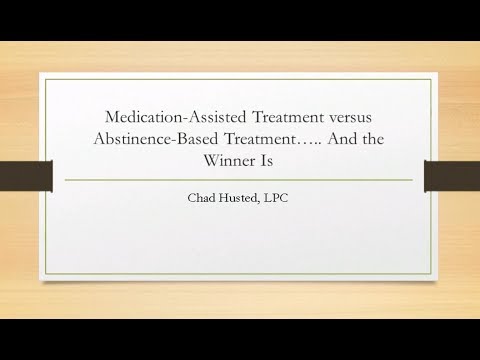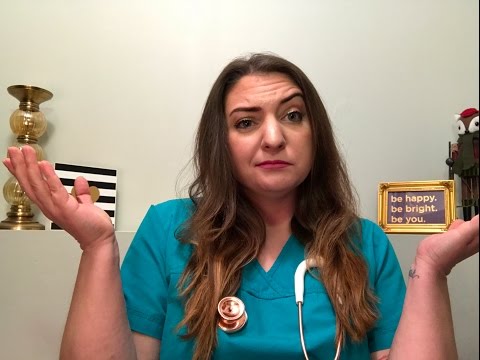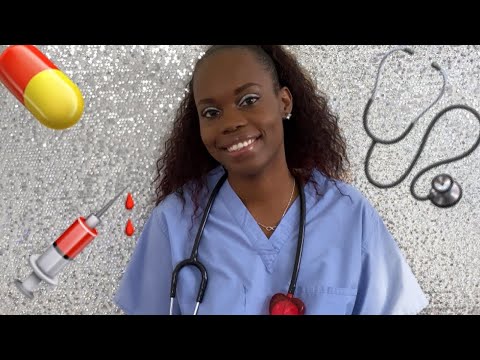Medication Assisted Treatment vs Abstinence: Which is Right for You?
Contents
If you’re struggling with addiction, you may be wondering what treatment option is right for you. Medication Assisted Treatment (MAT) is an effective option for some people, but abstinence may be the best choice for others. How do you know which is right for you?
Checkout this video:
Introduction
When it comes to addiction treatment, there is no one-size-fits-all approach. Medication Assisted Treatment (MAT) and abstinence-based recovery are both effective methods for overcoming addiction, but the best approach for you will depend on your individual needs and preferences.
MAT involves the use of medication to help reduce withdrawal symptoms and cravings, making it easier to stick to your recovery plan. Common medications used in MAT include methadone, buprenorphine, and naltrexone.
Abstinence-based recovery focuses on abstaining from all substances, including alcohol and drugs. This approach may involve attending counseling or support groups, as well as participating in individual therapy.
The most important thing is to choose the approach that you feel most comfortable with and that you feel will be most successful for you. If you are unsure of which approach is right for you, speak with your doctor or a treatment professional to get more information and guidance.
What is Medication Assisted Treatment?
Medication Assisted Treatment or MAT, is the use of medications in combination with counseling and behavioral therapies to treat substance use disorders. The medications used in MAT are approved by the FDA and specifically target withdrawal symptoms and cravings. This allows people in treatment to focus on their recovery, rather than their withdrawal symptoms.
MAT is not a “one size fits all” treatment, and different medications can be used depending on the individual’s needs. Some common medications used in MAT include buprenorphine, methadone, and naltrexone.
Buprenorphine is an opioid medication that is used to treat withdrawal symptoms and cravings. It can be prescribed by a physician and taken at home.
Methadone is an opioid medication that is only available through approved methadone clinics. It is closely monitored to ensure that it is being used as prescribed.
Naltrexone is an opioid antagonist that blocks the effects of opioids. It is typically only prescribed after someone has detoxed from opioids and is no longer using them.
What is Abstinence?
Abstinence from drugs or alcohol is the behavior of refraining from using substances that are known to be harmful. Abstinence is often portrayed as the only way to recovery, but it is only one of many options. medication assisted treatment (MAT) is an effective alternative for some people.
MAT involves using FDA-approved medications, such as buprenorphine or methadone, along with counseling and behavioral therapies, to provide a “whole-patient” approach to care.
research shows that MAT can help people reduce or stop their use of illicit drugs or alcohol, and it can also help them keep their jobs and be involved in their families and communities.
MAT is not right for everyone, and some people may prefer abstinence-based treatment. The most important thing is to find a treatment that works for you and that you can stick with.
The Pros and Cons of Medication Assisted Treatment
Methadone, buprenorphine, and naltrexone are all effective at reducing cravings and withdrawal symptoms. But they’re not right for everyone. Here’s what you need to know about each option to make the best decision for your recovery.
Methadone
Methadone is a long-acting synthetic opioid that is taken daily. It blocks the effects of other opioids and prevents withdrawal symptoms. It can be taken for months or years.
Pros:
-Reduces cravings and withdrawal symptoms
-Prevents relapse
-Can be taken for long periods of time
-Available at methadone clinics
Cons:
-Requires daily trips to the methadone clinic
-Can be addictive
-Can be expensive
-May cause drowsiness and dizziness
Buprenorphine
Buprenorphine is a partial opioid agonist that comes in the form of a dissolvable film or sublingual tablet (under the tongue). It is usually taken once a day. Like methadone, it prevents withdrawal symptoms and curbs cravings. But it can also cause withdrawal symptoms if you suddenly stop taking it. So it’s important to taper off slowly under medical supervision if you decide to stop taking buprenorphine.
Pros:
-Reduces cravings and withdrawal symptoms
-Prevents relapse
-Taken once a day
-Dissolvable film or sublingual tablet (under the tongue)
Cons:
-Can cause withdrawal symptoms if you suddenly stop taking it
-Must be tapered off slowly under medical supervision if you decide to stop taking it
The Pros and Cons of Abstinence
When it comes to addiction recovery, there is no one-size-fits-all solution. Some people swear by total abstinence from all drugs and alcohol, while others find success with Medication Assisted Treatment (MAT). So, how do you know which approach is right for you?
There are pros and cons to both abstinence and MAT. If you’re considering treatment for addiction, it’s important to weigh the pros and cons of each approach to decide which is right for you.
Pros of Abstinence
The most obvious pro of abstinence is that it guarantees that you will not use drugs or alcohol. This can be especially important if you have a history of relapse. If you’re concerned that even occasional use will lead to full-blown addiction, abstinence may be the best choice for you.
Abstinence also has the benefit of simplicity—it’s easy to understand and easy to stick to. There’s no need to worry about taking a pill every day or making sure you have enough of your medication on hand. If you’re struggling with addiction, simplifying your life can be a huge relief.
Cons of Abstinence
Though it’s often seen as the “harder” choice, abstinence may not actually be more difficult than MAT in the long run. For many people, complete abstinence is the only way to avoid relapse. If you find that you can’t control your use even when taking MAT, abstinence may be a better choice for you.
Another con of abstinence is that it can be isolating. If all your friends are using drugs or alcohol recreationally and you can’t join in, it can be difficult to maintain those relationships. You may need to find a new social circle that supports your sobriety.
Which is Right for You?
There are two main ways to approach addiction treatment: Medication Assisted Treatment (MAT) and abstinence. Both have their pros and cons, and the right approach for you will depend on your individual situation.
MAT involves using medication to help reduce withdrawal symptoms and cravings, making it easier to stick to your treatment plan. It can be an effective way to manage addiction, but it’s not right for everyone. Some people worry that taking medication will make them feel “dependent” on it, even if it’s just managing their symptoms. And MAT does nothing to address the underlying causes of addiction, so it’s possible to relapse if you don’t address those issues as well.
Abstinence, on the other hand, is focused on completely avoiding all drug use. This can be an effective approach for some people, but it’s not always realistic or possible. People who have been using drugs for a long time may have a hard time going cold turkey, and they may need help managing withdrawal symptoms. In some cases, complete abstinence may not be possible or desirable (such as with certain medical conditions), so MAT can be a better option.
It’s important to talk to your doctor or treatment provider about what option is right for you. They can help you weigh the pros and cons of each approach and make the best decision for your situation.
Conclusion
There are many different paths to recovery from addiction, and ultimately, the decision of which approach to take is a personal one. If you are considering medication assisted treatment (MAT) or abstinence-based recovery, it’s important to consult with a qualified professional to discuss the pros and cons of each approach and find the one that is right for you.
Resources
There are a variety of resources available to help you make the decision about which treatment option is right for you.
FAQ’s
1. What is the difference between MAT and abstinence?
2. What are the benefits of MAT?
3. Are there any risks associated with MAT?
4. How do I know if MAT is right for me?
About the Author
Gina Hodgson is a certified recovery coach and the founder of Recovery Unplugged, a music-based treatment program that has helped thousands of people overcome addiction. She is also the author of the book “Choosing Recovery: A Comprehensive Guide to Making Life-Changing Decisions.”







